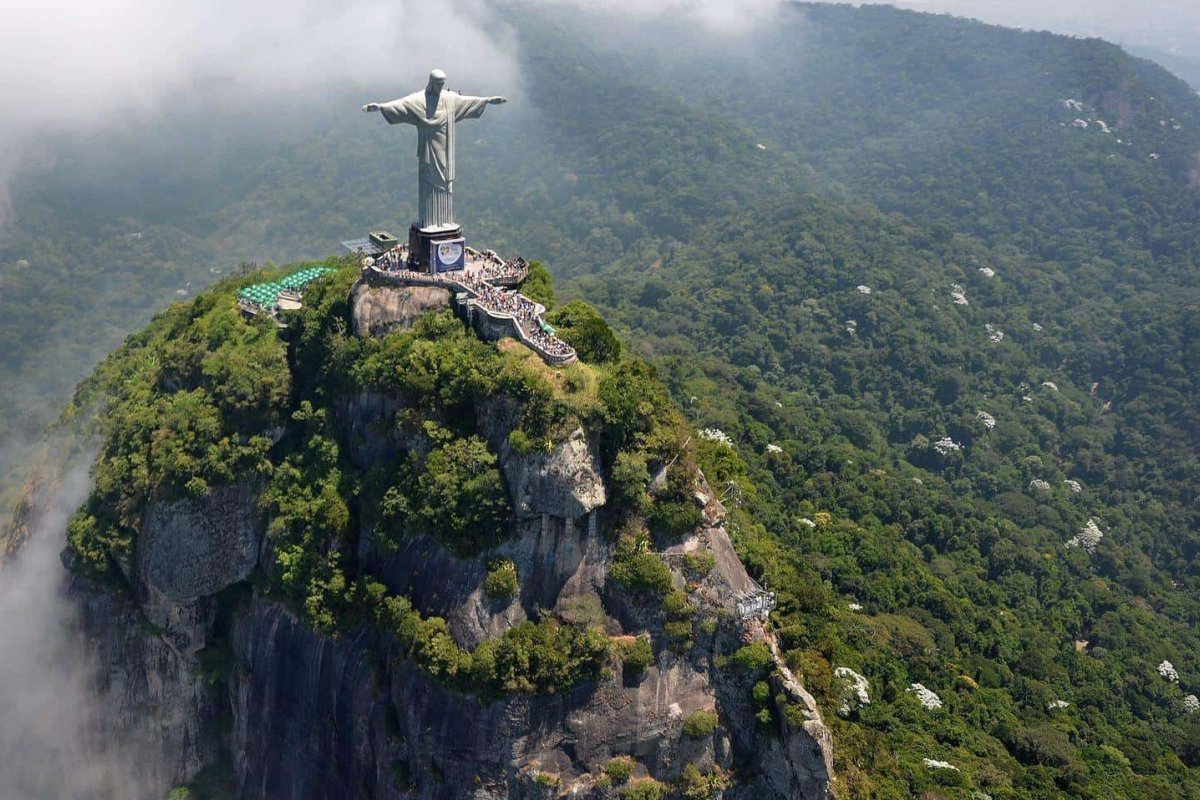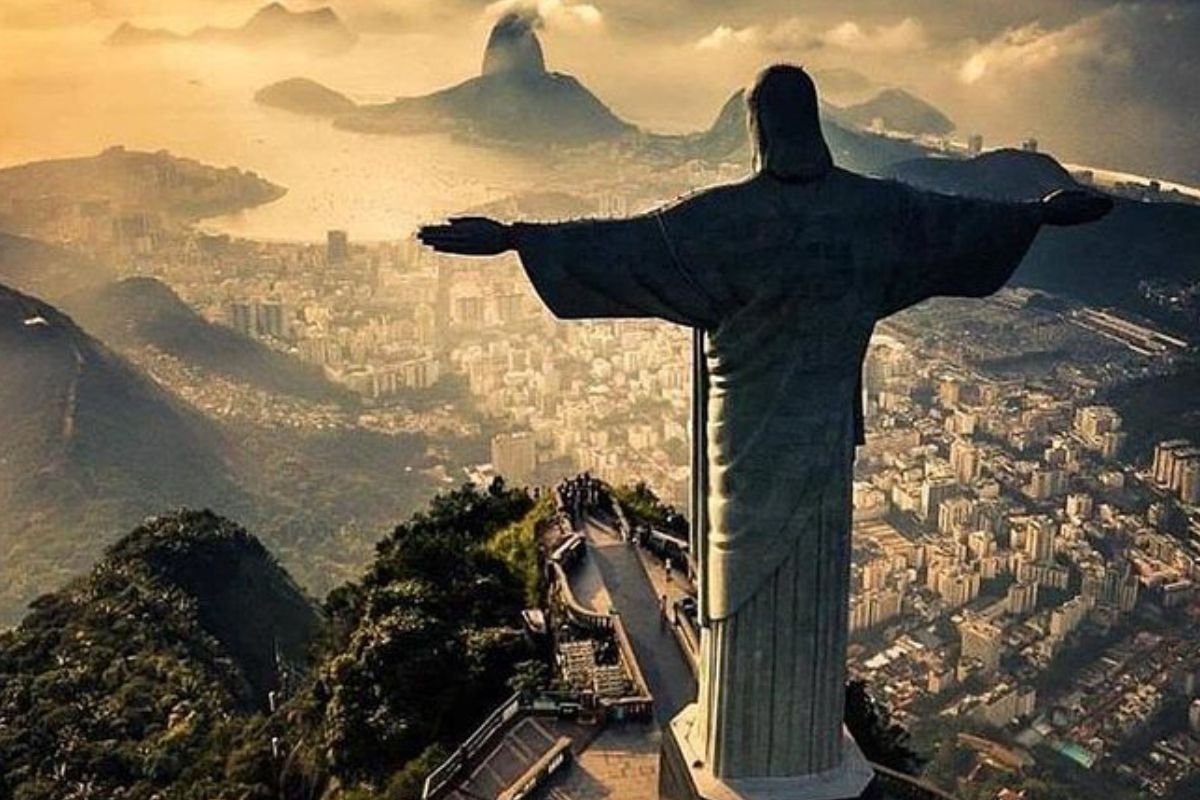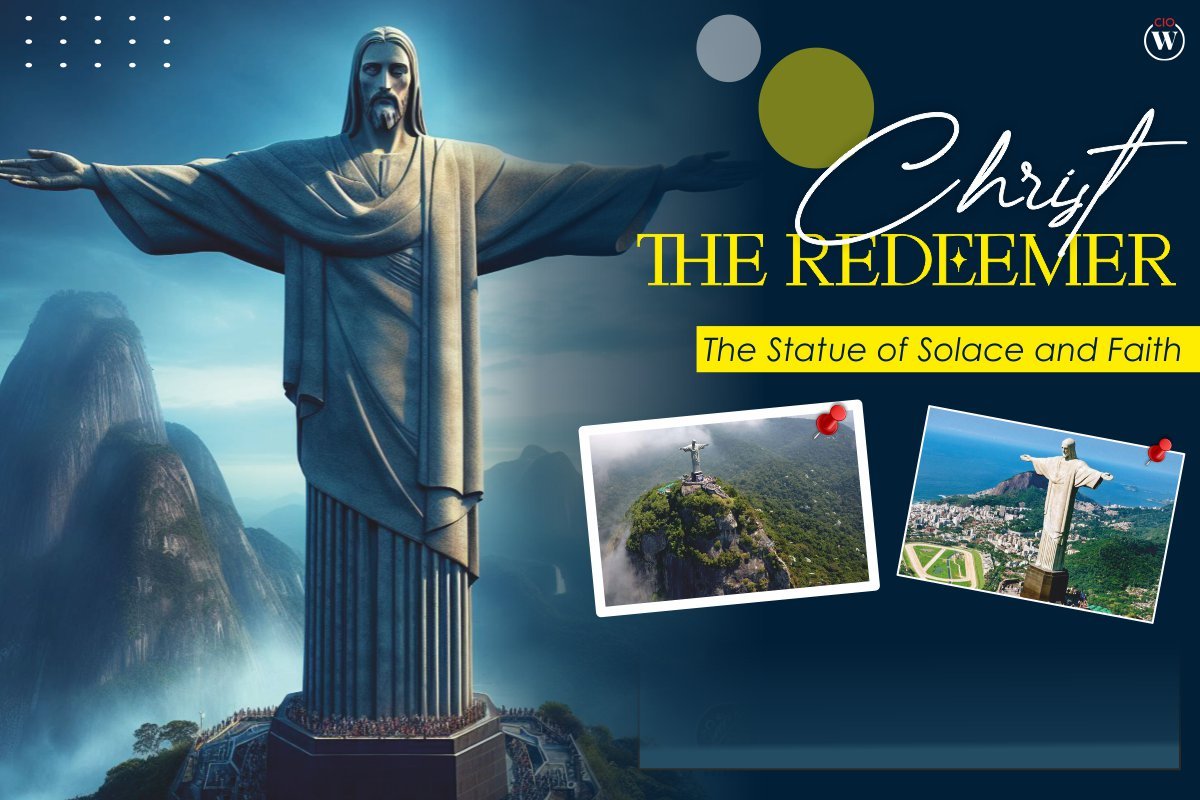Standing on top of the mountains of Corcovado in Rio de Genrio, Brazil is one of the world’s seven wonders – Christ, the Redeemer, looking over the magnificent city. Known by many names, Cristo Redentor (locally), Christ Redeemer statue or Christ, the Redeemer, it has become an internationally recognized symbol of both religious devotion and Brazil’s rich cultural heritage. Numerous non-religious students of statuary commonly refer to it as the Corcovado statue or Christ of Corcovado.
It stands 2,310 feet tall above the city, with a height measuring around 98 feet without the pedestal. The arms of the statue stretch around 92 feet horizontally and the statue weighs 1145 tons. It is the largest art déco-style sculpture in the world and has fascinating architecture, along with a rich history. In this article, we will learn more about this breathtaking monument.
Enriching History of Christ, the Redeemer
The idea for constructing a statue of Christ atop Corcovado Mountain was first conceived in the 1850s by a Brazilian Catholic priest named Pedro Maria Boss. However, it wasn’t until the early 20th century that the project gained momentum. In 1921, a group of Brazilian intellectuals and religious leaders initiated a campaign to build a large statue to commemorate Brazil’s centennial of independence.
The responsibility for designing the monument fell into the capable hands of Brazilian engineer Heitor da Silva Costa, who collaborated with French sculptor Paul Landowski. Together, they created a masterpiece that seamlessly blended Art Deco and Neoclassical styles. The statue was constructed using reinforced concrete and soapstone, a locally sourced material that has since become synonymous with the monument.
In 1923, people in Rio and across Brazil donated money to build the statue. They raised almost half of the total cost. Sculptor Paul Landowski created models for the head and hands of Christ, and calculations were made to guide the construction of the body and arms.
The construction of the colossal statue, made from reinforced concrete, took place on the clifftop for five years, from 1926 to 1931. Thousands of Brazilians, with their strong willpower and faith in Christ, joined forces with engineers, artists, workers, and contributors. Under the watchful eye of Heitor da Silva Costa, the statue took shape. It became the tallest statue of Jesus in the world, a symbol of their devotion and dedication.
The construction of the monument posed numerous challenges, including transporting the massive pieces up the mountain and ensuring the statue’s stability in the face of Rio de Janeiro’s unpredictable weather. Despite these obstacles, the statue was finally revealed on October 12, 1931, to great acclaim and has remained an enduring symbol of Brazil ever since.
Challenges the Monument Faced Throughout the Years

The current design of Christ the Redeemer wasn’t the original design of the monument. Heitor da Silva Costa and the artist Carlos Oswald wanted a statue to depict Christ with arms outstretched, holding a cross, and a big sphere, but the public rejected the idea. Archbishop of Rio appointed Da Silva as the deputy in charge of the project and the current design of the monument was constructed. However, the grandeur monument has gone through several challenges throughout the years.
- Treacherous Terrain: Mount Corcovado, where the statue is located, presented a challenging terrain for construction. The steep slopes and rocky landscape made it difficult to transport materials and equipment to the site.
- Logistics: Transporting the materials needed for the construction of the statue to the top of the mountain was a logistical feat. Overcoming the obstacles of the mountain and ensuring the safe delivery of the necessary components required careful planning and execution.
- Weather Conditions: The statue was exposed to the elements, including strong winds, heavy rain, and tropical storms. These weather conditions posed a challenge in terms of ensuring the stability and durability of the monument. The statue had to be made of solid materials capable of withstanding the influence of the weather.
- Lightning Strikes: Christ the Redeemer is frequently struck by lightning due to its elevated position and the storms that occur in the area. This posed a risk to the statue’s integrity and required measures to be taken to protect it from lightning damage.
- Maintenance and Restoration: Over time, the statue has required maintenance and restoration to preserve its structural integrity and appearance. This includes cleaning, repairs, and periodic restoration work to address any wear and tear caused by weathering and aging.
Despite these challenges, the construction team and subsequent maintenance efforts have persevered to ensure the monument’s longevity and continued significance. The reconstructions and ongoing maintenance have allowed Christ the Redeemer to remain a symbol of faith, peace, and cultural heritage for Brazil and the world.
Breathtaking Architectural Brilliance

Christ the Redeemer monument is surrounded by the beautiful landscape of the famous Sugarloaf Mountain, Tijuca forest, Copacabana and Ipanema beaches, and Guanabara Bay, but the structure itself is a magnificent beauty to behold. Along with having spiritual significance, its architecture is worth admiring.
- Art Deco and Neoclassical Fusion: The design of Christ the Redeemer Monument seamlessly blends elements of Art Deco and Neoclassical styles. This fusion of architectural influences creates a unique and visually striking monument.
- Materials: The statue is constructed using reinforced concrete and covered with soapstone, a locally sourced material. Soapstone not only provides durability but also gives the monument its distinctive appearance.
- Outstretched Arms: One of the most iconic features of the statue is its outstretched arms, symbolizing Christ’s embrace of all humanity. The arms span an impressive 92 feet (28 meters), creating a sense of openness and inclusivity.
- Location: The choice of Corcovado Mountain as the site for the monument adds to its architectural significance. The mountain’s elevation and panoramic views of Rio de Janeiro create a dramatic backdrop for the statue, enhancing its visual impact.
- Chapel: The pedestal of the monument houses a chapel dedicated to Our Lady of Aparecida, the patroness of Brazil. This addition adds a religious element to the architectural design and provides a space for prayer and reflection.
- Weather Resistance: Given Rio de Janeiro’s unpredictable weather, special attention was given to ensure the statue’s stability. The construction incorporated features to withstand strong winds, heavy rain, and other environmental factors.
- Night Illumination: The monument is equipped with a lighting system that allows it to be illuminated at night. This feature not only enhances the statue’s visibility but also adds to its visual appeal, creating a captivating sight for visitors.
Cultural Significance of Christ, the Redeemer
The monument holds profound cultural and religious significance for the people of Brazil. As a predominantly Catholic country, Brazil views the statue as a symbol of faith and a testament to the country’s deep-rooted religious heritage. It serves as a pilgrimage site for many Catholics, who ascend the mountain to seek solace, offer prayers, and find inspiration in the statue’s serene countenance.
Beyond its religious significance, the monument has also become an enduring symbol of Brazil’s national identity. It has been featured prominently in films, television shows, and advertising campaigns, solidifying its status as an iconic representation of the country. The statue’s welcoming embrace evokes feelings of unity, peace, and hope, resonating with people from all walks of life.
Interesting Facts About Christ, the Redeemer

- Are you searching for a special place to have your wedding? How about getting married under the famous Christ the Redeemer statue? There’s a little Catholic chapel right at the bottom of the statue where you can exchange your vows. This chapel is dedicated to the patron saint of Brazil, Nossa Senhora Aparecida (Our Lady of Aparecida).
- Many women played a vital role in constructing the statue. The beautiful mosaic coating, made up of small triangular pieces of soapstone that covered the entire surface of the statue, was carefully crafted by skilled and talented women.
- Instead of accepting a statue built to honor her on top of Mount Corcovado, Princess Isabel requested that a picture of the Sacred Heart of Jesus be created instead. This picture would serve as a visible reminder and declaration that Jesus is the true Savior of humanity.
- Christ the Redeemer of Corcovado was created to symbolize the greatness of Jesus Christ and the incredible significance of his sacrifice and resurrection. It represents the belief in his divine nature and the immeasurable value of his actions for humanity.
Christ the Redeemer is one of the tallest monuments apart from being a wonder and a must-visit landmark. You can reach there by train, van, walking, or hiking. Weekdays might be crowded and the weather can also affect the experience but seeing the magnificent structure should be a part of your bucket list that you might want to cross off next.









